By Jeffrey A. Rendall, Images by Miura Golf
HEMIJI, JAPAN – Hybrid. According to the Webster’s dictionary, it means “something made up of a mixture of different aspects or components.”
In the golf sense, many people used to treat hybrid golf clubs as if they carried some sort of disease, but there’s no doubting that they’ve caught on in a big way in recent times. Hybrids have become so accepted and so prevalent that many pros use them as well as recreational golfers who are always looking for a club that’s easier to hit.
The trend has reached master club-makers, too, as Japanese craftsman Katsuhiro Miura has introduced a new line of hybrids into his overall production, the MG series (HB3 and HB4). Appropriately called “The People’s Hybrid,” the MG adopts a blade-like face design to extend to the hybrids the same sense of security golfers feel with Miura irons.
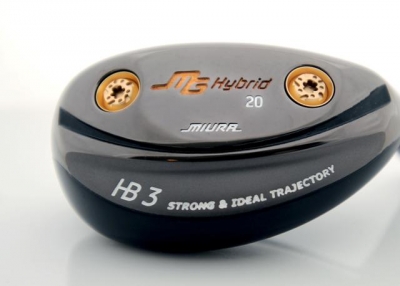 |
From personal experience, that’s a secure feeling, indeed.
I thought that the MG was Miura Golf’s first foray into the world of hybrids (having become world renowned for forged irons), but Adam Barr, President of Miura Golf, set me straight. “This isn’t our first hybrid, but rather an evolution in our hybrid line,” Barr explained. “Before this, we had success with the MU series of hybrids. In the case of those and the new MGs, we recognized that quite a few players are customizing their iron line-up these days, and not everyone wants the same long-game solutions.”
That’s for sure – just about every player I know is moving in the hybrid direction.
Barr continues, “Our long irons are very responsive and easy to hit, but some players prefer the special versatility of hybrids -- the ability to hit the ball consistently high and long, with a soft landing, being the chief attractive feature. So we're making sure players have a choice.”
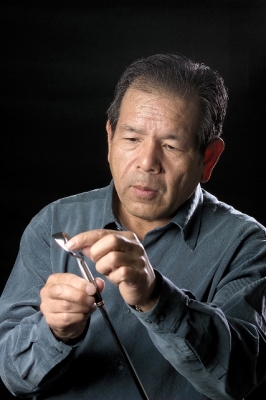 |
Hybrids aren’t necessarily meant to replace long irons, Barr said. It really depends on what each player feels that he or she needs. For example, someone who hits a 3-iron perfectly solidly may still not like the traditionally lower trajectory of an iron. This player could find he hits it higher with a properly fitted MG hybrid.
A lot of players prefer hybrids instead of 5-woods, too.
My Miura hybrid is the HB4 model, which could “replace” a 4-iron, if need be. I found the hybrid to hit the ball about the same distance as my 4-iron, but true to Barr’s words, a little higher – and it lands softer, too.
I personally like long-irons, but Barr thinks a hybrid can help a lot of folks who aren’t as fond of them. “Depending on ability, a hybrid can take away the uneasiness involved in hitting long irons for some players. The mass behind the ball and the ample sole (compared to an iron) make it easier for some players -- particularly those whose swings sweep more than hit down -- to make more solid contact with a hybrid than with an iron.”
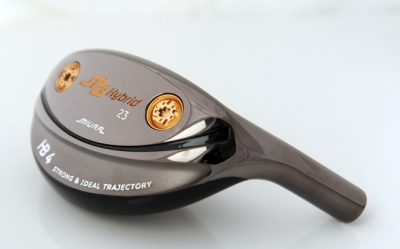 |
“And there are some players who will switch a 3-iron (or 4-iron) in and out of their bag with a hybrid depending on when and where they are playing. Hard turf, high winds, any number of conditions can prompt such a change. Players are beginning to think in different terms about their sets – ‘I have 16 clubs; which 14 make the cut to go into the bag today?’” Barr added.
It’s a specialized world. I hope to one day reach the level where I’ll adjust my club configuration to match the particular course I’m playing. For now, I just enjoy the comfort involved with hitting the Miura MG – it’s almost impossible not to hit it in the air (though I’m sure there are many out there who’d like a try at disproving this assertion).
Will hybrids eventually completely replace long irons?
Barr doesn’t think so. “Not completely, but it’s gone a good distance in that direction already. So many PGA Tour players use hybrids now, at least occasionally, for recreational players not to notice. Still, we make 3- and 4-irons, and people buy them and enjoy them, so I don't think they will vanish. We even get the occasional request for 1- and 2-irons, and yes, we can make them.”
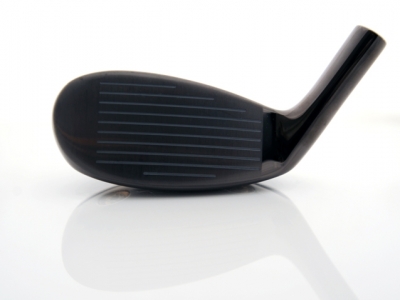 |
I’d like to get my hands on a Miura 2-iron – that’s one club that would definitely find a place in my bag.
Looking at the MG, it clearly isn’t forged, either. As mentioned previously, Mr. Miura has earned his reputation with hand-crafted forged clubs… but the company is versatile, too. According to Barr, the basic material in the hybrids is SUS 455 stainless steel. “I can imagine a forged hybrid, but it would have to be a multi-piece head (so-called “pulled face” construction) that would be welded or maraged together. There’s no real advantage to that.”
If anyone should know about advantage, it’s Mr. Miura and his sons. There’s a huge reservoir of collective experience at the company – and if they make it, you can better believe you can trust it (as does a highly ranked South Korean player who is consistently at the top of leader boards on the PGA Tour).
As to why you’d choose a Miura hybrid over other manufacturers, Barr thinks there are two incentives to go for their hybrid: “There are two key design features that make the MG particularly useful. First, notice the face: from the hitting position, it looks almost like an iron face. It draws the eye at address to the place where the club face and back of the ball meet. It gives the player the feeling that he is hitting an iron, which in turn encourages a nice down-hit motion. The resulting flight is high, long, and likely to hold a green.”
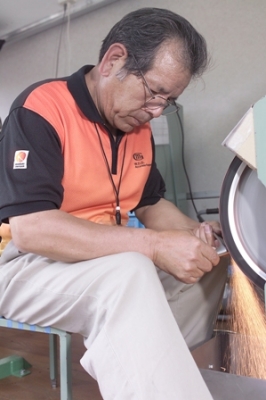 |
There’s more. “Second, the face is relatively tall -- specifically, it about equals the diameter of the golf ball. This adds confidence at address; the player sees solid "coverage" and feels like he's about to smack the ball right on its equator instead of fluffing under it or topping it.”
Finally, “Beyond that, the impact feeling is just super buttery sweet. When you add the involvement of an authorized Miura dealer/fitter, who will carefully assess the player's needs and build the club with the optimal shaft, you have a powerful long-game tool,” Barr said proudly.
No doubt. After examining the hybrid, I noticed two screw-like depressions on the bottom of the club, and thought they might be movable weights. Barr said no, they’re essentially plugs to fill holes that had to be left in the head to allow air to escape during the finishing process.
Movable weights aren’t necessary, though. “The overall design of the head gives it a weight distribution that is easy to square up at impact without even thinking about it,” Barr lectured.
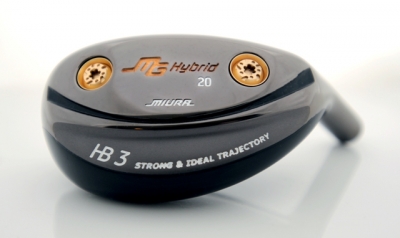 |
Sure enough, the MG hybrid is easy to square up – and pretty darn friendly to use. I originally thought it would roll out a little more (in my own bias, thinking it was closer to a fairway wood than an iron), but once I learned the situations for its use, I found it extremely reliable and “safe” to pull out of the bag.
It was a little ironic that a member of our group on a recent trip had also bought a hybrid (non-Miura) and wound up hitting it quite a bit. We swapped hybrid stories and agreed that the clubs are here to stay – they’re just so easy to use.
As with all of Miura’s products, the quality of manufacture on the hybrid is impeccable. If you’re in the market for a high-end golf product, I would highly recommend that you give Miura a try (and they’ve just expanded their network of club-fitters as well).
If you do, you might just feel that expanding your options in the bag is a great idea.
Details:
Miura Golf’s North American headquarters is in Burnaby, British Columbia.
Consult the website for dealers near you, or send inquiries to Bill Holowaty, bill@miuragolf.com. Telephone: 604-708-4653. FAX: 604-708-4663.
Toll Free: 1-866-GO-MIURA (466-4872)
Website: www.miuragolf.com
| Related Links | Comments on this article? | |
|
Maryland National Golf Club Hollow Creek Golf Club Rocky Gap Resort PB Dye Golf Club in Ijamsville Whiskey Creek Golf Club |
E-mail Jeff Rendall, Editor: jrendall@golftheunitedstates.com |












